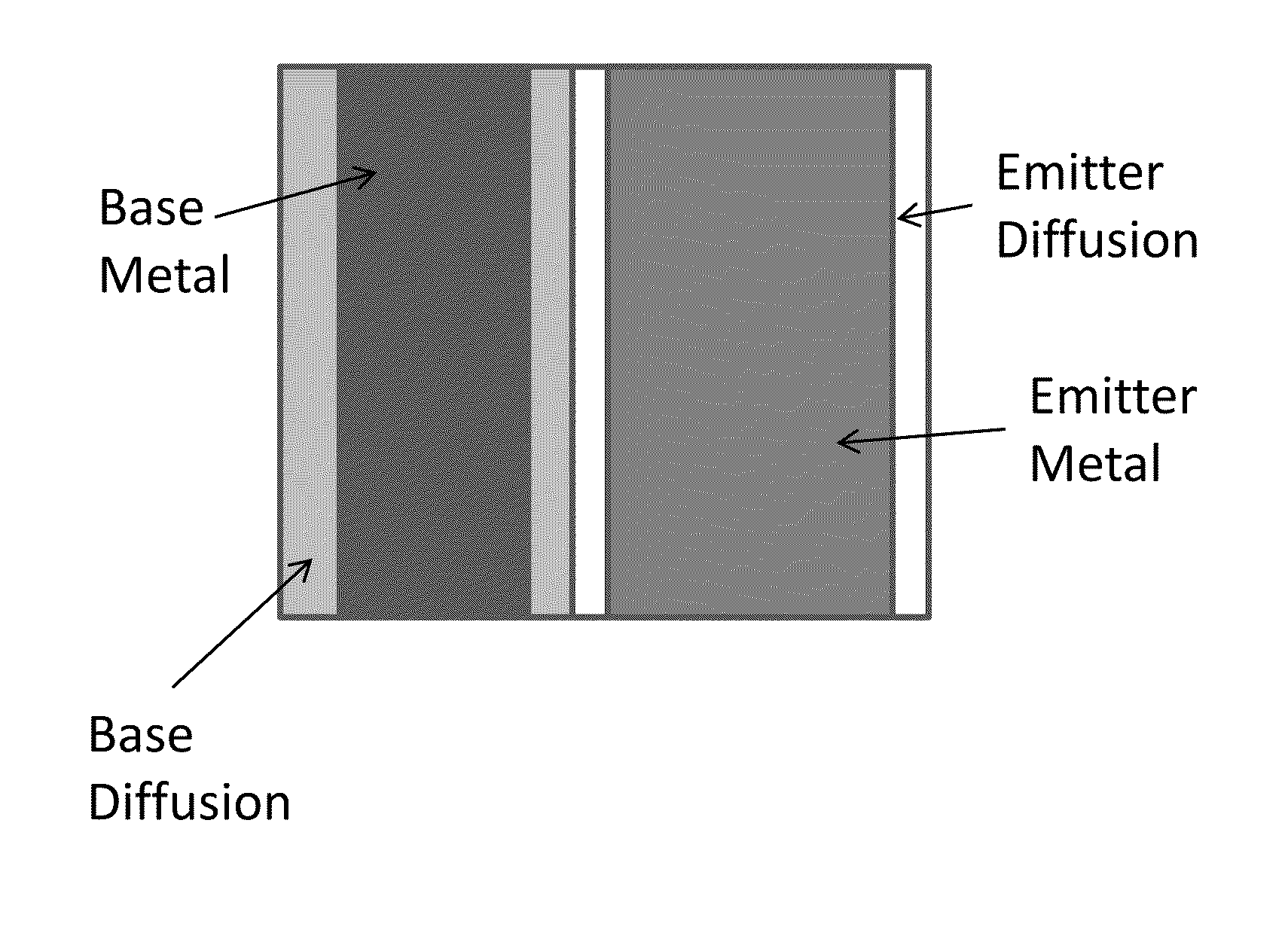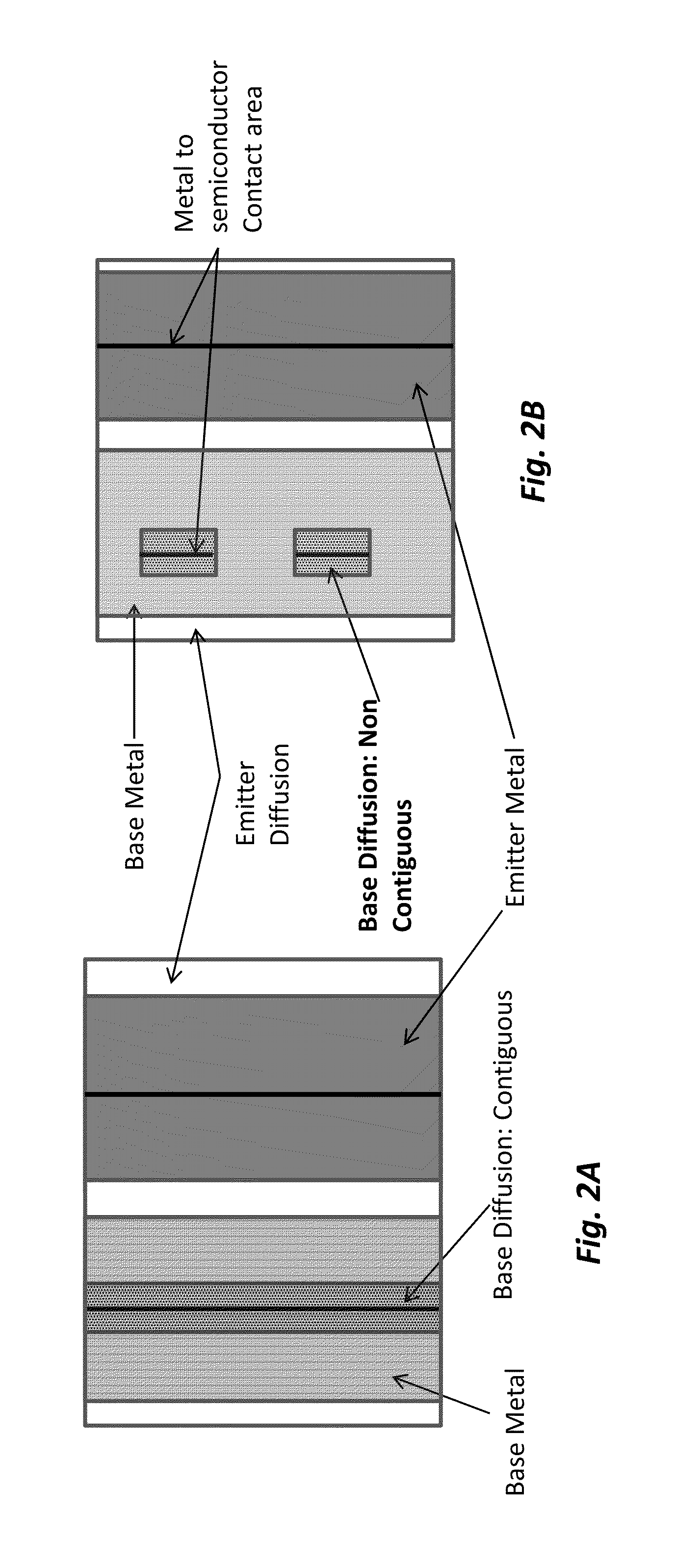Structures and methods of formation of contiguous and non-contiguous base regions for high efficiency back-contact solar cells
a solar cell and back-contact technology, applied in the field of photovoltaics, can solve the problems of increasing the overall manufacturing cost of the solar cell, reducing the emitter fraction and increasing the electrical shading, and achieving the effect of reducing or eliminating disadvantages and problems
- Summary
- Abstract
- Description
- Claims
- Application Information
AI Technical Summary
Benefits of technology
Problems solved by technology
Method used
Image
Examples
Embodiment Construction
[0033]The following description is not to be taken in a limiting sense, but is made for the purpose of describing the general principles of the present disclosure. The scope of the present disclosure should be determined with reference to the claims. Exemplary embodiments of the present disclosure are illustrated in the drawings, like numbers being used to refer to like and corresponding parts of the various drawings.
[0034]And although the present disclosure is described with reference to specific embodiments, such as crystalline silicon and other fabrication materials, one skilled in the art could apply the principles discussed herein to other materials, technical areas, and / or embodiments without undue experimentation.
[0035]The disclosed subject matter provides various structures and manufacturing methods for high-efficiency back-junction / back contacted solar cells specifically using thin crystalline semiconductor absorbers such as monocrystalline silicon with the cell absorber la...
PUM
 Login to View More
Login to View More Abstract
Description
Claims
Application Information
 Login to View More
Login to View More - R&D
- Intellectual Property
- Life Sciences
- Materials
- Tech Scout
- Unparalleled Data Quality
- Higher Quality Content
- 60% Fewer Hallucinations
Browse by: Latest US Patents, China's latest patents, Technical Efficacy Thesaurus, Application Domain, Technology Topic, Popular Technical Reports.
© 2025 PatSnap. All rights reserved.Legal|Privacy policy|Modern Slavery Act Transparency Statement|Sitemap|About US| Contact US: help@patsnap.com



